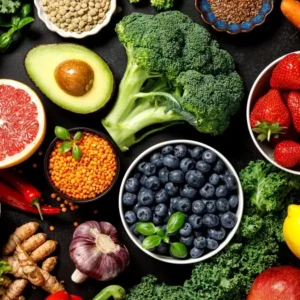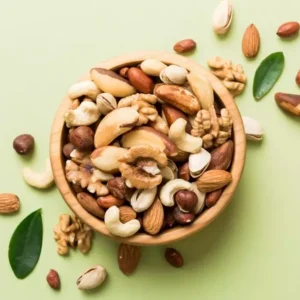Verified on 08/12/2023 by PasseportSanté
Silicon is a trace element found in the body as well as in certain foods of plant origin. Even though it is not one of the so-called essential trace elements, it is an important element for the immune system and for maintaining good bone health.
Silicon characteristics:
- non-essential but important trace element for the body;
- is found in mineral water and in foods of plant origin;
- helps fix calcium and fight against bone demineralization;
- Organic silicon is used to relieve various conditions, mainly bone, joint and skin.
What are the benefits of silicon?
Fix the calcium
Silicon plays a role in the fixation of calcium, we find silicon in particular in the osteoid border where the bone is built.
Participates in immunity
A high concentration of silicon is found in the thymus, an essential organ of the immune system. It also plays a role in the production of antibodies.
Fight against osteoarthritis
It appears that silicon taken in addition to a balanced diet has a positive effect on the symptoms of people with osteoarthritis.
Silicon and hair
Organic silicon participates in the structuring of connective tissues and appendages (skin, nails, hair). Silicon would stimulate the production of keratin and therefore keep hair and nails healthy.
Use of organic silicon
In 2000, the AFSSA determined intakes of 5 mg of silicon per day for a healthy adult. It is estimated that a balanced diet represents an intake of around 50 mg of silicon per day, which is more than enough to cover needs even taking into account urinary losses which are on average 90%.
Organic silicon G5: benefits and reviews
G5 silicon is the form of organic silicon best assimilated by the body. It would minimize the risks of crystallization in the kidneys since it is the form naturally present in tissues: bones, skin, hair, tendons, etc.
Food supplements based on organic silicon are often found in the form of gel, capsules or oral solution. Their use is generally recommended in people suffering from bone and joint pathologies (osteoarthritis, arthritis, osteoporosis, etc.). They are also recommended for certain elderly people to prevent bone demineralization. Before taking silicon, please seek the advice of your doctor. Indeed, there are certain contraindications to the use of organic silicon.
What is silicon dioxide?
Silicon dioxide actually has little to do with organic silicon. It is a combination of oxygen and synthetic silicon used as a food additive (E551) for its anti-caking properties.
How long should a silicon treatment last?
An intensive silicon treatment generally lasts between 1 and 6 months depending on the problem and the context. To find out the correct dosage for your situation, please consult a healthcare professional.
 Receive every day
Receive every day
advice from our experts
to take care of you

Is organic silicon dangerous?
Organic silicon is a trace element that has been debated for many years. While some define it as a miracle supplement, others think it is ineffective or even dangerous. At present, no health hazards from organic silicon have been proven. However, no well-founded scientific study demonstrates or justifies its effectiveness.
Consequence of silicon deficiency
No studies have demonstrated the result of silicon deficiency in humans. On the other hand, in rats we observed a reduction in collagen and bone abnormalities in cases of deficiency. The silicon content of the body does not decrease with age, however its distribution changes. Thus the skin, the thymus or even the cartilage will see their silicon concentration decrease, for example.
Side effects of excess silicon
Excess silicon is directly eliminated by the kidneys, so it does not present a risk to the body except in cases ofrenal failure.
Foods rich in silicon
The ANSES table of nutritional composition of foods does not indicate the precise silicon contents of foods.
Here is a list of the 20 foods richest in silicon:
- wheat and oat bran;
- whole wheat ;
- barley ;
- oats;
- spelled ;
- pain complet ;
- White beans ;
- lentils;
- green beans ;
- lettuce ;
- mushrooms ;
- almonds ;
- nut ;
- dates;
- apple ;
- banana ;
- parsley ;
- ail ;
- onion ;
- drinking water.
Interaction of silicon with aluminum
Silicon reduces the assimilation and accumulation of aluminum. It could thus participate in the prevention of certain neurodegenerative diseases by reducing the toxicity of aluminum on the cells of the nervous system.
Chemical properties
The symbol for silicon is Si, its atomic number is 14. Silicon has an atomic mass of 28.0855 u. After oxygen, it is the most abundant element in the earth’s crust, making up more than 25% of it. In its natural state, it is a solid element with a dark gray color.
Nutrient History
Silica has been known since ancient times. However, it was not until 1823 that J. Jacob Berzelius succeeded in isolating silicon. Much later in 1957, the synthesis of organic silicon was made possible by N. Duffaut who managed to stabilize it using salicylic acid. Very quickly, organic silicon will be subjected to numerous clinical trials, particularly in the fields of cardiology, oncology and rheumatology.
In the 1970s, Dr. Loïc Ribault began to accidentally become interested in the benefits of organic silicon on skin conditions. He then realized that a multitude of conditions responded favorably to silicon-based treatments. Thus, in the 1980s the two men joined forces to finally develop the G5 silicon which would only see the light of day in 1994. Since then, the G5 silicon, although controversial, has been used throughout the world to relieve various bone conditions, joints, skin, etc.
Our dietitian’s opinion
Silicon is a non-essential trace element but nevertheless important for the health of the body. If certain food supplements based on silicon and its derivatives are still debated, nothing beats a quality diet which alone is sufficient to largely cover our silicon needs. Good news, silicon is found in good quantities in many common foods: cereals, legumes, oilseeds, etc.
97% Readers found this article helpful And you ?
Was this article useful to you?











